25 Biases Causing You To Lose Views
We are all susceptible to biases, mental shortcuts that can lead to flawed decision-making. These can hinder growth and prevent you from reaching your full potential. Let’s explore 25 key biases and strategies to mitigate them.
YouTube is a dynamic platform, a digital arena where creators battle for attention in a sea of content. Success on YouTube isn't just about creating good videos - it's about understanding the psychology of both your audience and yourself.
We are all susceptible to biases, which are mental shortcuts that can lead to flawed decision-making when creating YouTube content. These biases can significantly impact your YouTube channel and approach to strategy, hindering growth and preventing you from reaching your full potential. This post will explore 25 key biases that can hold back your YouTube efforts, categorised for clarity, and offer strategies to mitigate their impact.
Cognitive Biases
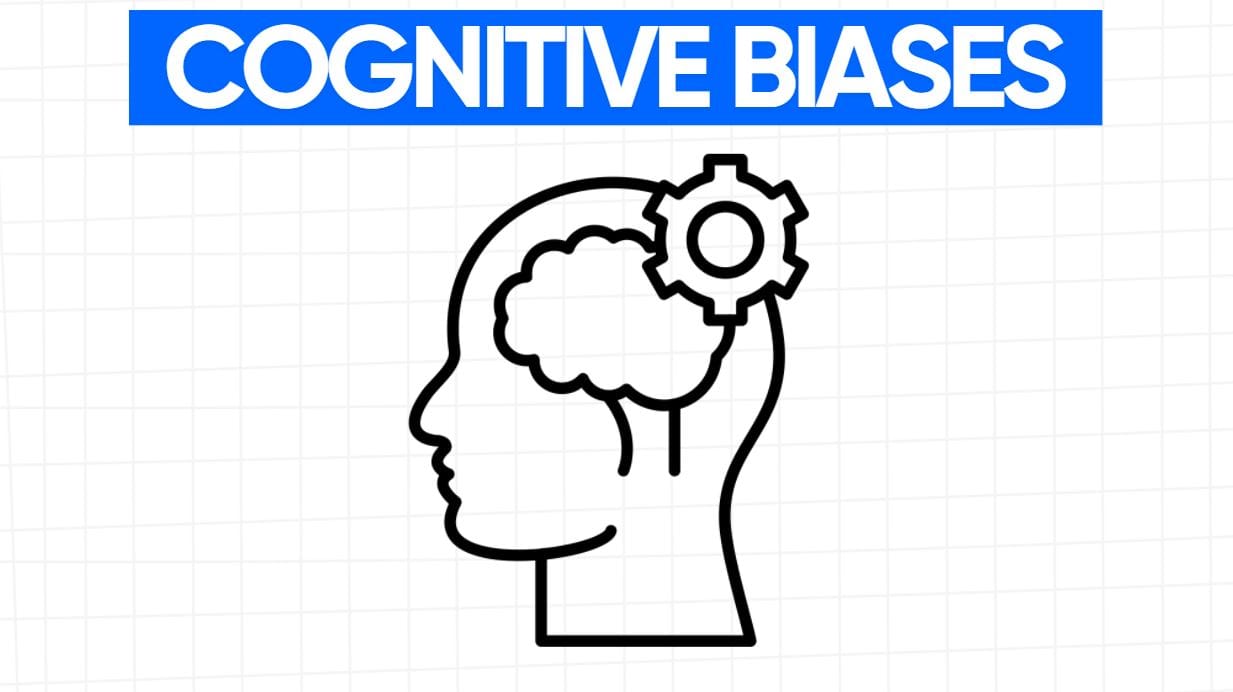
These biases come from our inherent tendency to simplify complex information, often leading to inaccurate conclusions and decisions.
Confirmation Bias:
We tend to seek and favour information that confirms our pre-existing beliefs. On YouTube, this might mean clinging to outdated strategies or ignoring data that contradicts our assumptions. For example, if you believe longer videos always perform better, you might dismiss data showing shorter videos in your niche achieving higher engagement. To avoid this, actively seek diverse perspectives, analyse data objectively, and be willing to challenge your own assumptions.
This bias can manifest in subtle ways, such as selectively reading articles or watching videos that support your existing viewpoint while dismissing those that offer opposing evidence. Furthermore, confirmation bias can significantly impact how you interpret your own analytics. If you believe a particular strategy is working, you might selectively focus on positive metrics while downplaying negative ones, creating a distorted view of your channel's performance.
Availability Heuristic:
This bias makes us overestimate the importance of information that is readily available or easily recalled, often due to recent exposure or vivid examples. If a viral challenge recently dominated YouTube, you might believe it's the only path to growth, neglecting other effective strategies. Counter this by grounding your strategy in data and research, not just anecdotal evidence.
The availability heuristic is really strong on YouTube because trends and viral videos are always popping up. Because we see them everywhere, we think they're more important or common than they actually are for most channels. This can make creators waste time and effort chasing trends instead of focusing on long-term plans that actually work.
Bandwagon Effect:
This describes our tendency to adopt behaviours or beliefs simply because they are popular. On YouTube, this could manifest as blindly following trends without considering their relevance to your niche or audience. Just because everyone is using Shorts doesn't mean they're the right fit for your content. Conduct thorough research and consider your audience's preferences before jumping on any bandwagon.
This "follow the crowd" mentality can be particularly damaging on YouTube, where trends can be fleeting and what works for one creator might not work for another. It's easy to get caught up in the hype surrounding a new format or challenge, but without careful consideration, you could end up creating content that doesn't resonate with your existing audience or attract the right viewers. This can lead to wasted time and resources, and even damage your channel's brand if the trend clashes with your established image or content style.
Survivorship Bias:
This bias leads us to focus solely on successful examples, ignoring those that failed. If you study successful YouTubers, you might copy their strategies without realizing many others tried the same approach and failed. To avoid this, research failed channels and understand why their strategies didn't work. Learn from their mistakes.
A more balanced approach involves analysing not only the successes but also the failures, identifying common pitfalls and understanding the factors that contribute to channel stagnation or decline. This broader perspective provides a more realistic understanding of the YouTube landscape and allows creators to make more informed decisions about their own strategies.
Negativity Bias:
We tend to give more weight to negative information than positive information. On YouTube, this could mean fixating on a few dislikes or negative comments while ignoring a wealth of positive engagement. While negative feedback is valuable, don't let it overshadow the positive. Focus on the overall trend and use the negative feedback constructively.
This inherent bias can be particularly detrimental to creators on platforms like YouTube, where public feedback is readily available. A single harsh comment can often overshadow dozens of positive ones, leading to feelings of discouragement and self-doubt. This can stifle creativity and prevent creators from taking risks or experimenting with new content, for fear of further negative reactions.
Algorithm-Related Biases
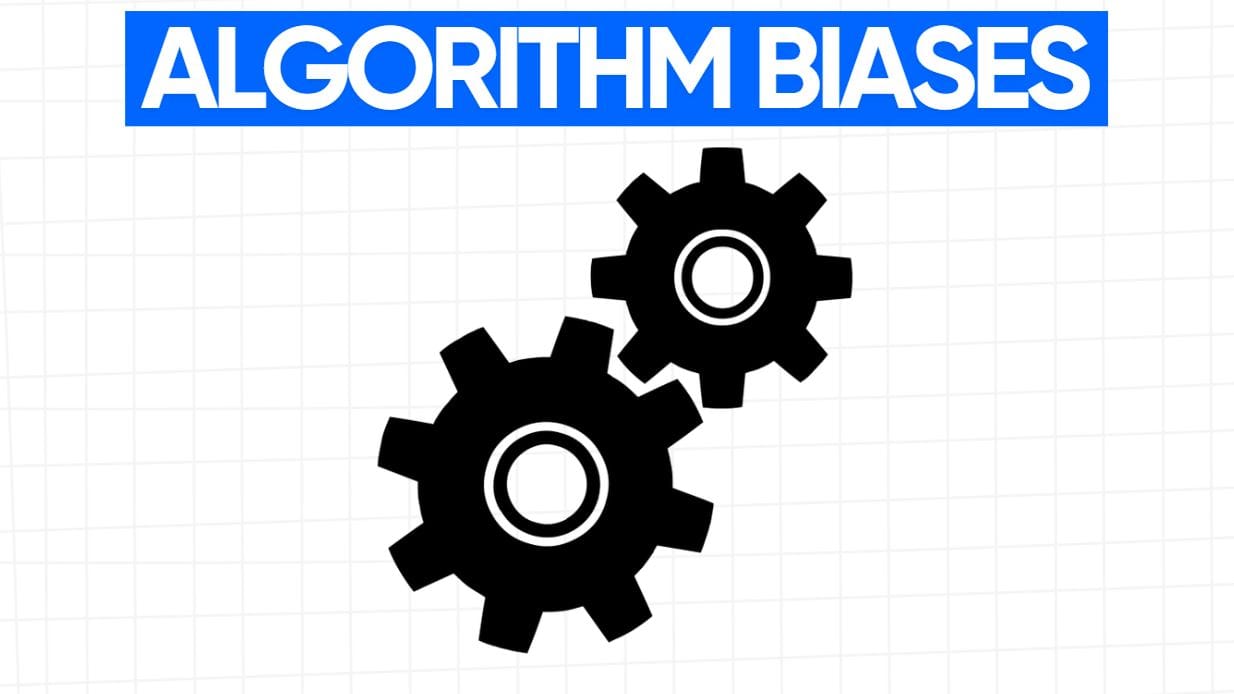
These biases arise from misconceptions about how the YouTube algorithm works.
Algorithm Blindness:
This is the assumption that the algorithm has fixed rules that apply universally. In reality, the algorithm is dynamic, personalised, and constantly evolving. Thinking YouTube only promotes daily uploads is a prime example. Instead of seeking universal "hacks", focus on creating high-quality content that resonates with your target audience.
The YouTube algorithm is designed to prioritise viewer satisfaction, and its constant evolution reflects the changing preferences of its users. Therefore, a more sustainable and effective approach is to focus on creating content that genuinely engages and entertains your target audience, rather than chasing fleeting algorithm trends.
Feedback Loop Bias:
This occurs when we repeat strategies that the algorithm reinforces, potentially limiting creativity. If reaction videos perform well, you might only create them, eventually losing audience interest. To avoid this, regularly experiment with new formats and content types, even if they don't initially perform as well.
This creates a feedback loop where the algorithm rewards familiar content, leading creators to become trapped in a cycle of repetition. While consistency is important for building an audience, over-reliance on a single successful format can lead to creative stagnation and ultimately bore viewers.
Recency Bias:
This bias makes us overreact to the latest algorithm changes or trends, neglecting long-term data. Overhauling your entire strategy based on a single video's performance spike is a classic example. Instead, you should analyse long-term trends and make strategic adjustments based on consistent data patterns.
Analysing long-term data provides a more accurate picture of what resonates with your audience and allows you to make strategic adjustments that are sustainable and contribute to long-term growth, rather than chasing short-lived gains.
Audience and Perception Biases
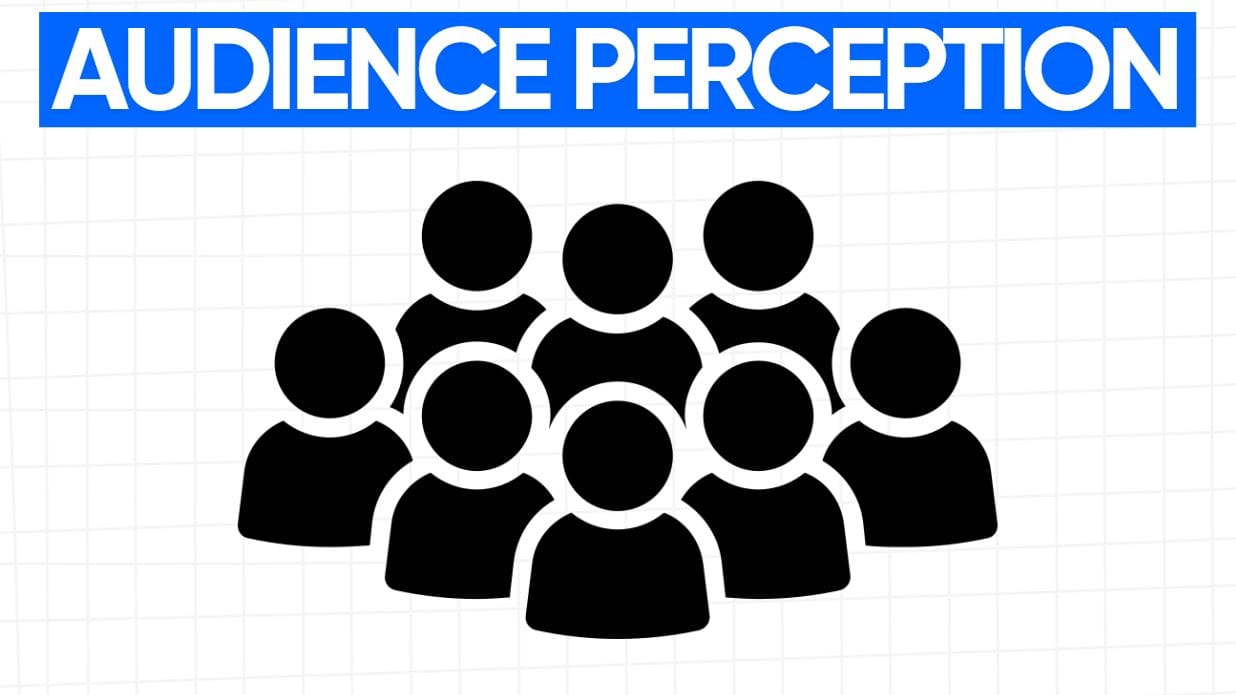
These biases distort our understanding of our audience and how they perceive our content.
Audience Homogeneity Bias:
This is the assumption that your audience has uniform preferences based on the most vocal members. Catering only to commenters might alienate silent viewers who prefer different content. Use analytics to understand the broader preferences of your audience, not just the vocal minority.
The majority of viewers may be "lurkers" who consume your content without actively engaging in comments or other forms of public feedback. So focusing solely on the vocal minority runs the risk of you creating content that caters to a niche within your audience while potentially alienating the larger, silent majority. Utilising analytics tools provided by YouTube Studio can offer valuable insights into broader audience demographics, viewing habits and content preferences, providing a more comprehensive and representative understanding of your viewership beyond the comments section.
Halo Effect:
This bias leads us to assume that if someone excels in one area, they must be successful in all areas. If a creator has great editing, you might assume their entire strategy is flawless, ignoring other factors contributing to their success. Analyse each aspect of a creator's strategy separately, rather than making blanket assumptions.
A creator's success might be attributed solely to their charismatic personality, when in reality, factors such as consistent upload schedules, effective marketing, or strategic collaborations played a significant role. By focusing only on the most visible aspect of their success, you overlook the complex interplay of factors that contribute to their overall performance.
Anchoring Bias:
This bias makes us rely too heavily on initial information, such as early performance metrics. Declaring a video a failure based on its first 24 hours of views is a common mistake. Allow time for your videos to gain traction and analyse long-term performance.
Focusing solely on these initial numbers can lead to unnecessary anxiety or even the premature removal of a video that might have gained traction over time through search, suggested videos or other discovery methods. A more effective approach is to track performance over a longer period, analysing metrics such as watch time, audience retention and click-through rate over days, weeks, or even months to get a more accurate picture of a video's overall success.
Data and Analysis Biases
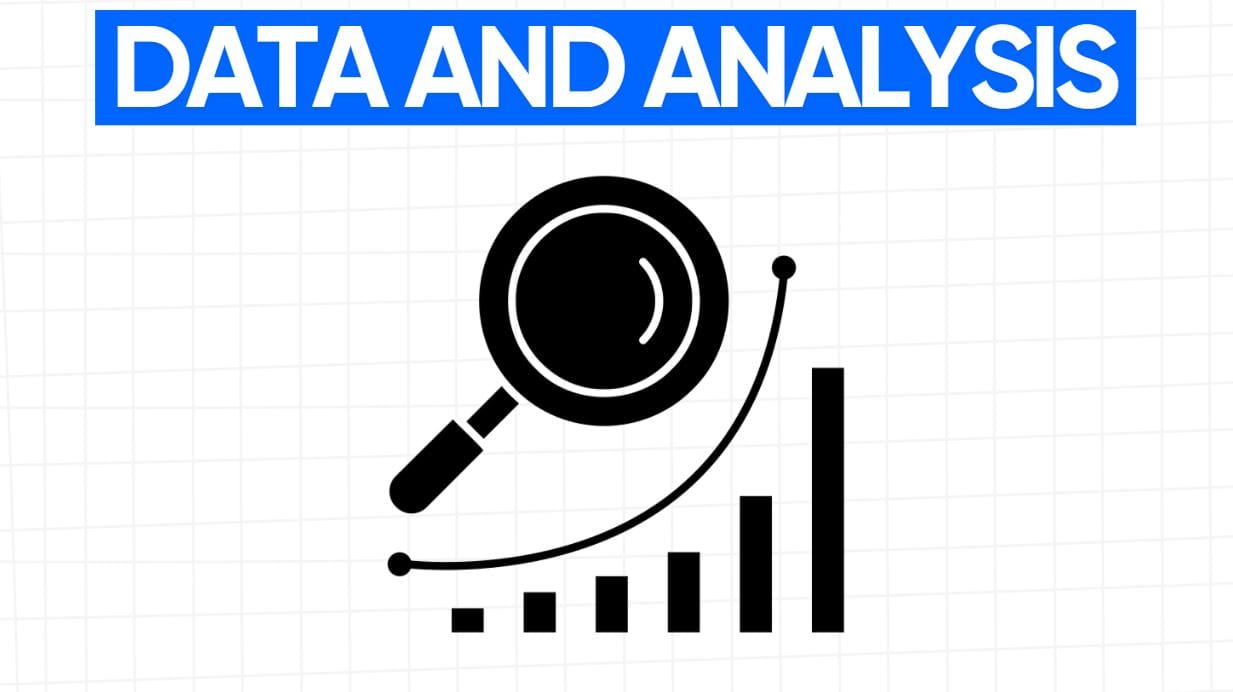
These biases affect how we interpret data and make decisions based on it.
Selection Bias:
This occurs when we analyse a non-representative sample of data. Analysing only your top-performing videos and ignoring the rest will give you a skewed understanding of what works. Analyse all your data to identify patterns and understand why some videos underperform.
Analysing the data from all your videos allows you to identify patterns and trends that might not be apparent when looking at only a select few. This comprehensive analysis can reveal crucial information about audience preferences, content formats, and other factors that influence video performance, enabling you to make more informed decisions about future videos.
Overfitting Bias:
This bias leads us to create strategies based on overly specific data patterns that may not generalize. Assuming certain thumbnails always work without testing variations is a prime example. Test different elements of your videos to identify what truly resonates with your audience.
A more robust approach involves conducting A/B testing and other forms of experimentation to identify broader patterns and principles that can be applied across a wider range of content, allowing creators to develop more adaptable and effective strategies that are less susceptible to the pitfalls of overfitting.
Correlation vs. Causation Bias:
This bias makes us mistake correlation for causation. Just because high watch time correlates with likes doesn't mean longer videos cause higher engagement. Conduct A/B tests to establish causal relationships between different variables.
This can lead to ineffective strategies based on flawed assumptions. For example, if you observe that videos with high watch times also tend to have a high number of likes, you might mistakenly conclude that increasing video length will automatically lead to more likes. However, it's possible that other factors, such as compelling content or engaging storytelling, are responsible for both high watch time and high engagement.
Vanity Metric Bias:
This is the tendency to prioritise metrics like views or subscribers over actionable metrics like watch time or audience retention. Celebrating 1,000,000 views while neglecting a low CTR is a classic example. Focus on metrics that reflect audience engagement and contribute to long-term growth.
While high view counts and subscriber numbers can be gratifying, they don't necessarily translate to a thriving and engaged community. For example, a video might have a million views, but if the average watch time is only a few seconds, it indicates that viewers aren't finding the content compelling enough to hold their attention. Similarly, a large subscriber count is meaningless if those subscribers aren't actively watching your videos.
Content Creation and Planning Biases
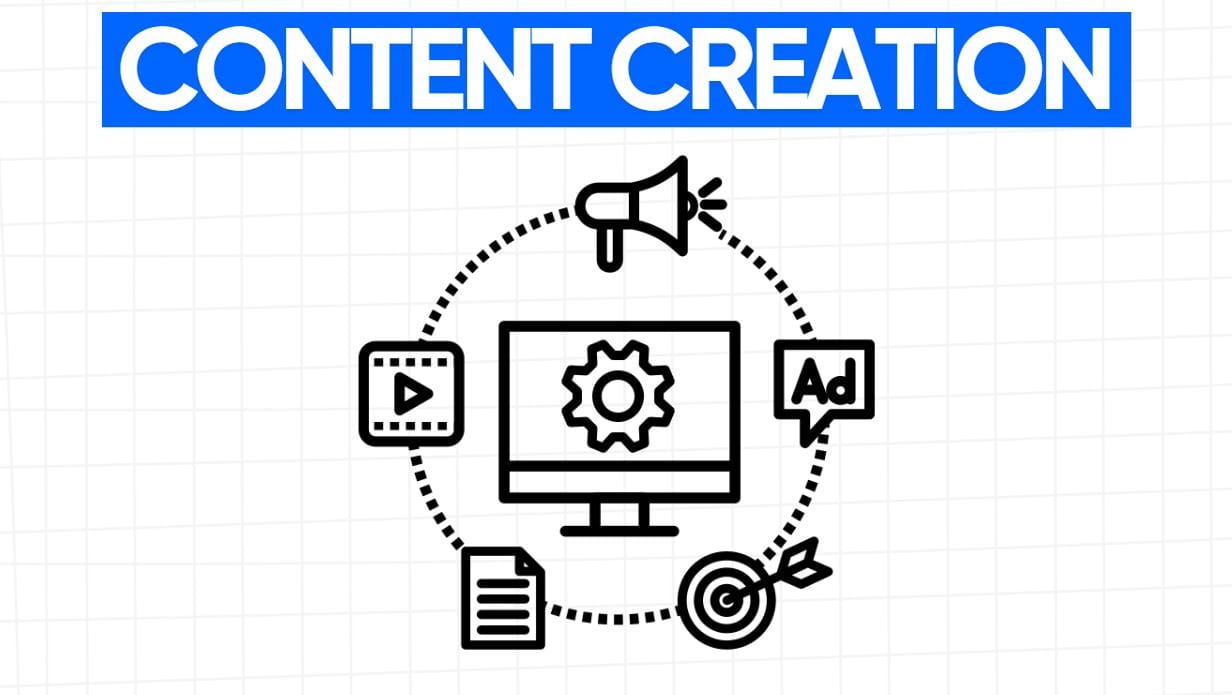
These biases affect our approach to content creation and planning.
Planning Fallacy:
This is the tendency to underestimate the time and resources required for a task. Thinking you can create a viral video with minimal effort is a common example. Create realistic timelines and provide sufficient resources for each video.
This underestimation can lead to missed deadlines, rushed production, and ultimately, a lower quality product than intended. The belief that a video can "go viral" with minimal effort often ignores the complex factors that contribute to virality, including audience engagement, promotion, timing, and even luck. Underestimating the time required for pre-production (scriptwriting, storyboarding), production (filming, recording), and post-production (editing, sound design, graphics) can result in a frantic scramble to finish projects, compromising the quality and potentially leading to burnout.
Sunk Cost Fallacy:
This bias makes us continue with a failing strategy because of the time and effort already invested. Persisting with a series despite declining views is a prime example. Be willing to cut your losses and pivot to a new strategy if necessary, letting you recover sooner than later.
Recognizing the sunk cost fallacy and being willing to "cut your losses" means creators can free up resources to pursue more promising avenues and recover more quickly from setbacks. Objectively analysing performance metrics and being open to feedback are essential for avoiding this trap.
Optimism Bias:
This is the tendency to overestimate the likelihood of positive outcomes. Expecting every new video to outperform the last is unrealistic. Set realistic expectations and focus on consistent improvement.
A more effective approach is to focus on consistent improvement, setting achievable goals for each video and tracking progress over time. This allows you to celebrate incremental successes and maintain motivation even when facing setbacks.
Procrastination Bias:
This is the tendency to delay important tasks. Avoiding analysing your metrics because it feels overwhelming is a common example. Break down large tasks into smaller, manageable steps to overcome procrastination.
For example, instead of setting aside a whole day to analyse all your channel analytics, you could dedicate 15-30 minutes each day to focusing on a specific metric, such as watch time or click-through rate. This approach makes the task feel less overwhelming and makes it easier to build consistent habits that contribute to long-term success.
Social and Interaction Biases
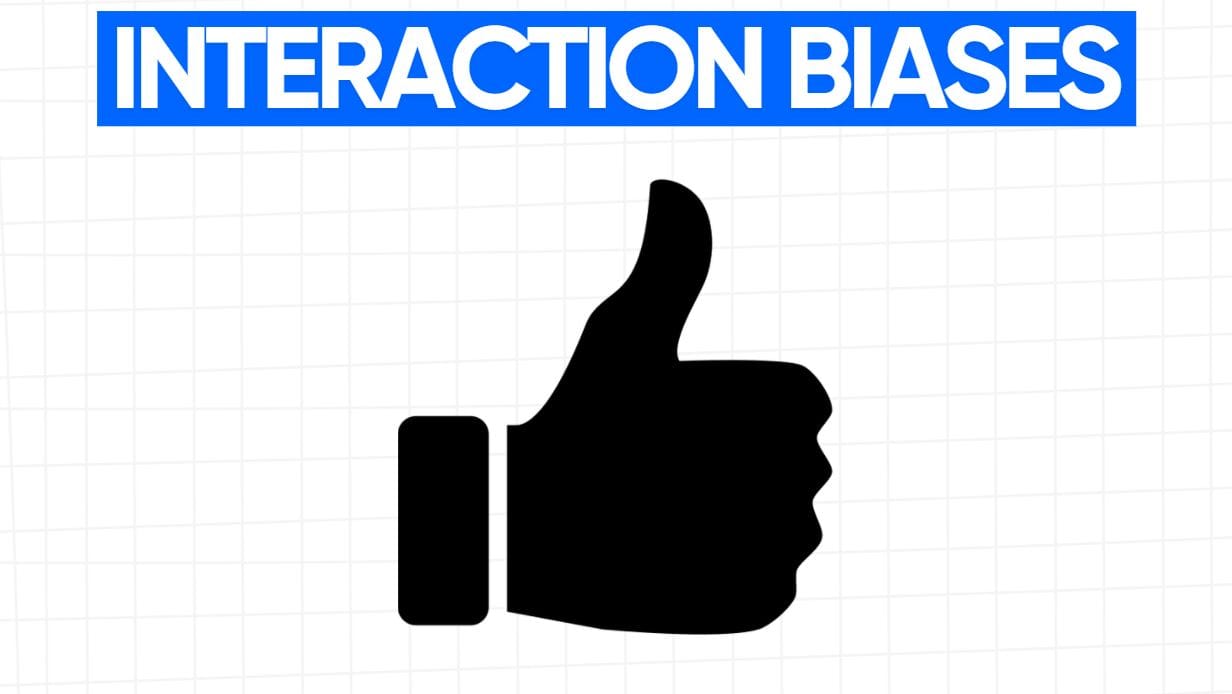
These biases affect how we interact with the YouTube community.
Social Proof Bias:
This bias makes us rely heavily on likes, comments, and shares as indicators of quality. Removing videos that get low engagement too quickly without analysing why is a mistake. Analyse the reasons behind low engagement before making drastic decisions.
This can lead to missed opportunities for growth and a distorted understanding of what truly resonates with your audience. While engagement metrics can provide valuable feedback, they shouldn't be the sole determinant of a video's worth or potential. A video might initially receive low engagement due to various factors, such as the time of day it was uploaded, the algorithm's initial distribution, or even external events that are competing for viewers' attention.
Echo Chamber Effect:
This occurs when we only engage with content and creators that reinforce our existing beliefs. Only networking with creators in your niche can limit your exposure to new ideas. Seek out diverse perspectives and engage with creators outside your niche.
By only interacting with those who share your perspectives, you miss out on valuable opportunities to learn from different approaches, discover new content formats, and gain insights into different audience demographics. Engaging with creators and content outside your niche can spark new ideas, challenge your assumptions, and broaden your understanding of what's possible on the platform.
Influencer Bias:
This bias makes us overvalue advice from large influencers without considering their unique context. What works for a celebrity creator might not work for a small channel. Adapt advice to your specific circumstances and audience.
Furthermore, the advice given by influencers may be tailored to their specific niche or target audience, and may not be relevant to other creators with different content or viewer demographics. It's crucial to critically evaluate advice from influencers, considering your own unique circumstances, audience, and resources, and adapt those strategies to fit your specific needs.
Strategic Decision Biases
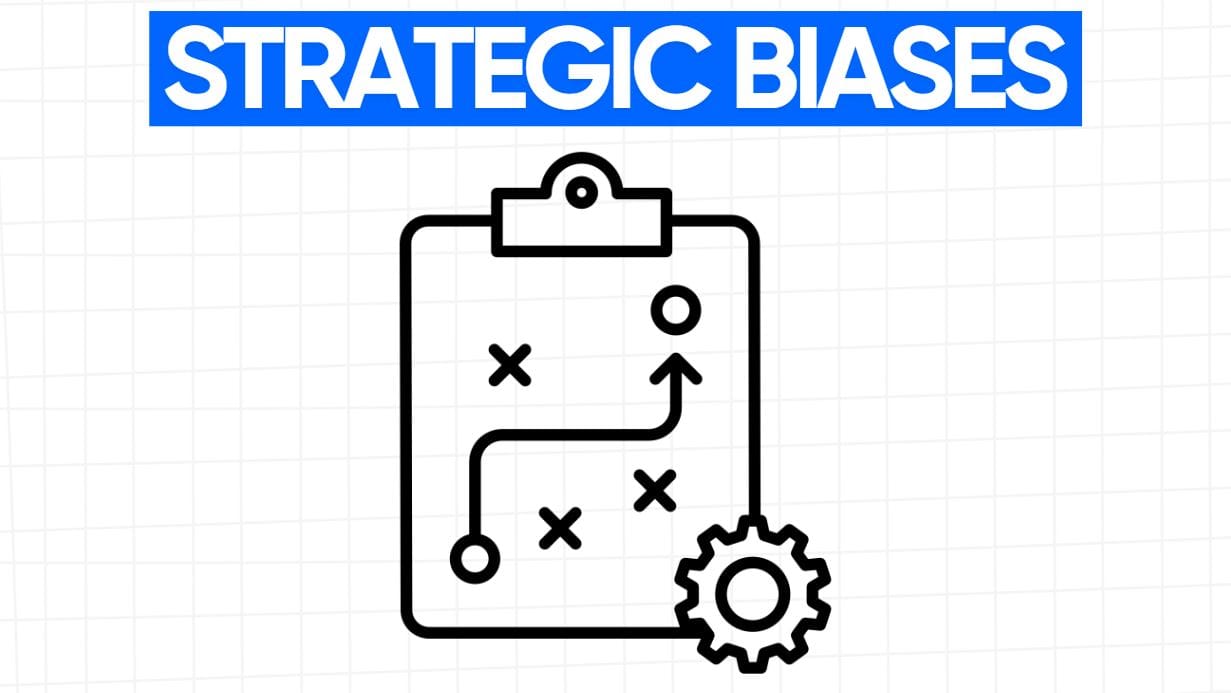
These biases affect our overall strategic decisions.
Risk Aversion Bias:
This is the tendency to avoid taking risks, even when they could lead to significant rewards. Sticking to safe, repetitive content instead of experimenting with new ideas can stifle growth. Embrace calculated risks and experiment with different content formats.
It's important to differentiate between reckless gambles and calculated risks - thoroughly research and plan your experiments, and analyse the results to learn from both successes and failures.
Short-Termism Bias:
This is the tendency to focus on immediate results rather than long-term growth. Chasing trends at the expense of building a consistent brand is a common mistake. Develop a long-term strategy and focus on building a loyal audience.
While capitalizing on trending topics can provide short-term boosts in views, it's crucial to consider the long-term impact on your channel. Constantly shifting your content to align with the latest trends can confuse your audience, making it difficult for them to understand what your channel is truly about.
Overconfidence Bias:
This is the tendency to overestimate our own abilities or knowledge. Ignoring new features like YouTube Shorts because you assume they won't work for you is a prime example. Stay open to new possibilities and continuously learn about the platform.
Maintaining a mindset of continuous learning and staying open to new possibilities allows creators can adapt more effectively to these changes and take advantage of new opportunities for growth. Dismissing new features or strategies without proper evaluation can limit your channel's potential and prevent you from reaching a wider audience.
Understanding these biases lets you make more informed decisions, optimise your YouTube strategy, and ultimately achieve greater success. Remember, awareness is the first step to overcoming these mental traps. So actively challenging your assumptions and embracing data-driven decision-making, lets you unlock the true potential of your YouTube channel.
If you're looking to skyrocket your YouTube views, then be sure to check out our blog post about getting millions of views on YouTube in 2025!
